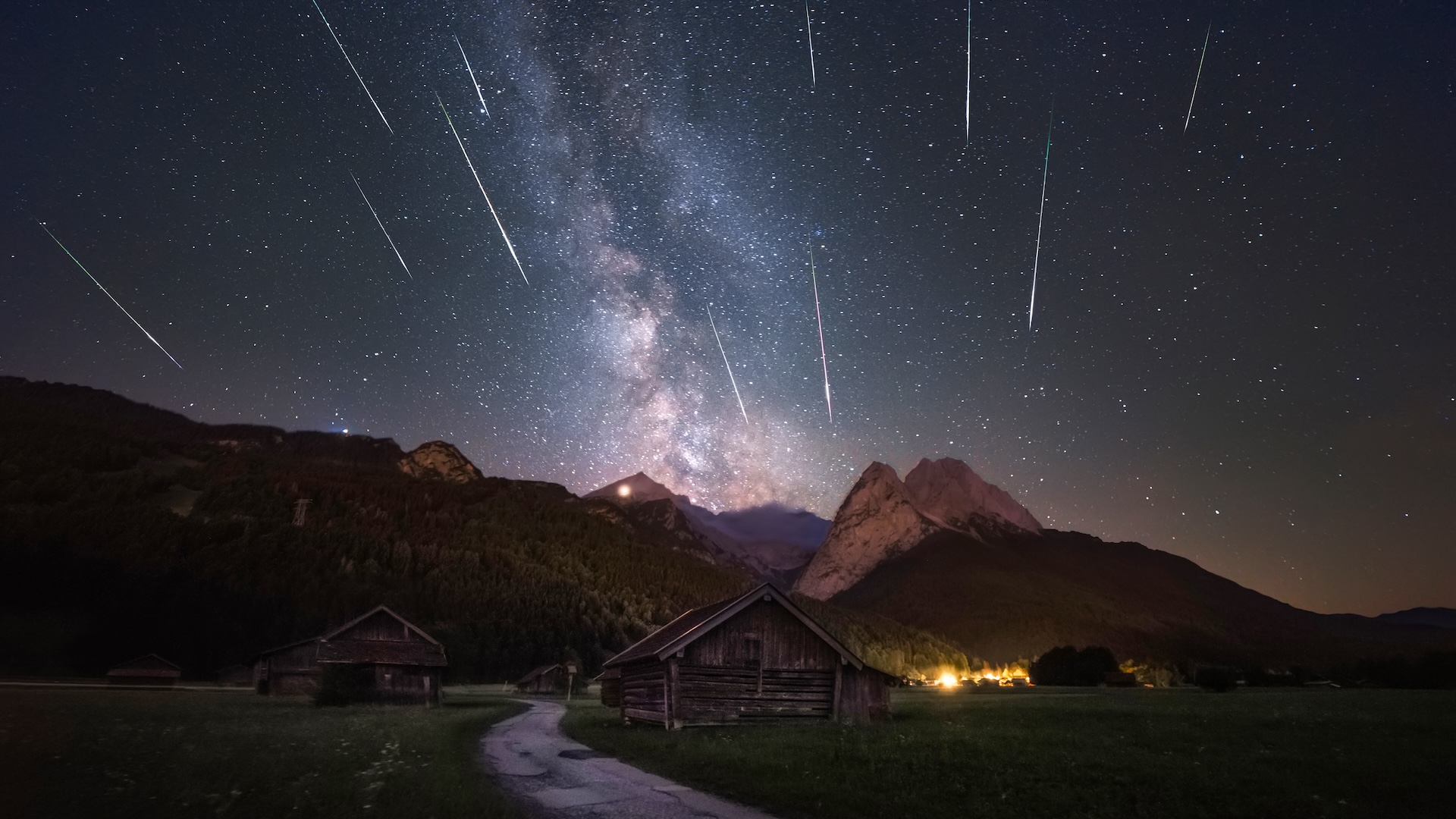The 1st week of August is a stargazer's delight. Here's why.
With its moonless sky, the first week of August is one of the best times all year to see the Milky Way and meteor showers without a telescope. Here's how to be in the right place at the right time for the best view.

The arrival of August means two things for stargazers — "shooting stars" and the Milky Way. In 2024, you can see both at the same time if you know exactly where and when to look.
For both sights, a dark sky unhindered by light pollution is crucial. You can find a dark sky by doing two things. First, get far away from cities and any artificial light. That might mean choosing an International Dark Sky Place or, in Canada, a Dark-Sky Preserve, where artificial light is reduced and regulated. Or it may mean identifying somewhere that looks dark on a light pollution map. Second, you must look skyward when the moon is down. This month, there's a new moon on Aug. 4, which will keep the post-sunset sky dark until about Aug. 8.
That makes the first week of August ideal for spotting "shooting stars" — while you also look for the Milky Way. True darkness won't come until midnight for most of the Northern Hemisphere, but look to the southeast after dark, and you'll have a chance of seeing the Sagittarius arm of the Milky Way arching across the night sky.
Related: The Milky Way will be visible without a telescope this summer. Here are the key nights to watch for.
To the naked eye, our galaxy's arm looks like a hazy band of light. If you want assurance that you're looking in the right place, look for the three bright stars high in the southeast after dark — Vega, Deneb and Altair — which make up the famous "Summer Triangle" asterism. The Milky Way flows through the Summer Triangle, roughly from Deneb to Altair.
With suitably dark skies, you won't need any gear to view the Milky Way — but a good pair of stargazing binoculars or a backyard telescope can help focus on specific stars, nebulas and other features nestled within our galaxy.
Even in dark skies, meteor showers will never "light up the night sky," as some will have you believe. However, early August should be a great time to spot some meteors, because three annual showers will be active. The Delta Aquariids (July 18 to Aug. 21) and the Alpha Capricornids (July 7 to Aug. 15) will be on the wane and not particularly prolific, but they'll contribute a few meteors per hour. More importantly, the Perseid meteor shower will be on the rise (July 14 to Sept. 1). Perseid "shooting stars" will be visible as the shower builds to its peak on Aug. 11 to12.
Get the world’s most fascinating discoveries delivered straight to your inbox.
According to the American Meteor Society, you may see around 50 to 75 Perseids after midnight during the event's peak, making it one of the most spectacular meteor showers of the year.
In the nights after the Perseids, the moon will get much brighter, turning into a full "Sturgeon Moon," on August 19 but moving out of the pre-midnight sky by Aug. 26. That will clear the way for more post-sunset views of the Milky Way before the month is out. It will set earlier each night before disappearing from view in October, so catch it while you can!
Editor's note: This article was updated on Aug. 1 with a new headline

Jamie Carter is a freelance journalist and regular Live Science contributor based in Cardiff, U.K. He is the author of A Stargazing Program For Beginners and lectures on astronomy and the natural world. Jamie regularly writes for Space.com, TechRadar.com, Forbes Science, BBC Wildlife magazine and Scientific American, and many others. He edits WhenIsTheNextEclipse.com.


